US Says To Coordinate With Allies On Iran's 'Bloody Crackdown'

The US said Friday that it would continue to coordinate with its allies on how to respond to Iran's "bloody crackdown" on protesters and its "state-sponsored violence" against women.

The US said Friday that it would continue to coordinate with its allies on how to respond to Iran's "bloody crackdown" on protesters and its "state-sponsored violence" against women.
The US reaction came at the same time that Canada’s Prime Minister Justin Trudeau announced strong measures against Iran’s Revolutionary Guard for its role in ongoing human rights violations.
The Biden Administration has sanctioned Iranian officials involved in implementing repressive measures since popular protests began in mid-September after a 22-year-old woman, Mahsa Amini was killed in the custody of Iran’s religious or ‘morality’ police.
"We are going to continue to coordinate with our allies and partners and respond to Iran's violent crackdown as well as, frankly, its state-sponsored violence against women," State Department spokesman Vedant Patel told reporters.
Nationwide protests broke out in Iran after Amini was pronounced dead from injuries to her brain on September 16. Security forces have acted brutally against protesters, killing many including teenagers and children.
"The Iranian government has now killed more than 100 people in its bloody crackdown," he added, citing credible human rights groups.
European countries have also reacted to Iran’s violations of human rights during the protests and have vowed to hold Tehran responsible for its treatment of women. The European Parliament adopted a resolution on Thursday condemning Amini’s killing and asking member states to react to Iran’s violations.
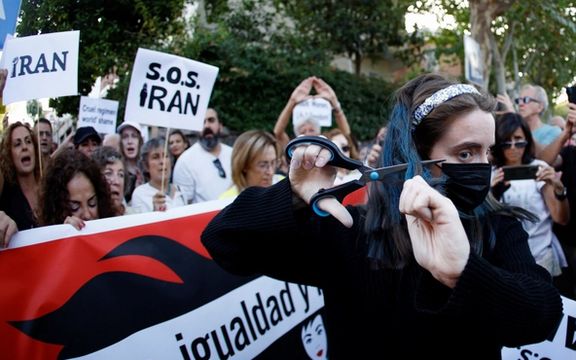
The European Parliament adopted a resolution Thursday condemning Mahsa Amini’s killing in Iran and voiced support for protests demanding change in the country.
The resolution instructed all member states “to use the mechanisms envisaged in the EU Guidelines on Human Rights Defenders to support and protect these individuals [activists, protesters], in particular women’s rights defenders and EU-Iranian dual nationals.”
Iran’s foreign ministry Friday dismissed the resolution calling it “baseless and worthless” blaming extremist elements for pushing a campaign against the Islamic Republic.
On the same day, announcing new sanctions on some Iranian officials engaged in suppressing protests, US Secretary of State Antony Blinken said Washington will keep the pressure on Tehran.
“The United States will promote accountability for all those who direct and support actions that deny the people in Iran their rights to freedom of expression and of peaceful assembly. Today we designated seven security apparatus leaders responsible for the crackdown,” Blinken tweeted.
The United States on Thursday imposed sanctions on seven Iranian officials over the shutdown of internet access and the crackdown on peaceful protesters.
The US Treasury Department in a statement said it imposed sanctions on Iran's minister of interior, Ahmad Vahidi; Communications Minister Eisa Zarepour; and Vahid Mohammad Naser Majid, the head of the Iranian Cyber Police, among others.

"The United States condemns the Iranian government’s Internet shutdown and continued violent suppression of peaceful protest and will not hesitate to target those who direct and support such actions," Under Secretary of the Treasury Brian Nelson said in the statement.
But White House NSC coordinator John Kirby told the CNN that the administration is still committed to the revival of the 2015 nuclear deal, which would release tens of billion of dollars for Iran. He told CNN, “We still believe diplomacy is the best path forward to prevent Iran from achieving nuke weapon. But we’re not close to a deal right now. I’d not be thinking there's sanctions relief in the offing anytime soon for Iranians right now.”
Iranian activists and other have been urging the Biden Administration to formally withdraw from the nuclear talks in the light of Tehran’s intransigence and its violent crackdown of protesters, especially the killing of young women.
US Envoy for Iran Rob Malley told NPR that "What US wants is a government in Iran that respects people's fundamental rights. It's not a policy of regime change. It's a policy of backing people who're protesting peacefully, because they want to be able not to wear a headscarf yet face oppressive system."
The European Union and its member states are putting significant pressure on Iran, by foreign ministers telling Tehran to stop its mistreatment of citizens. However, Iran’s foreign minister Hossein Amir-Abdollahian has dismissed such calls, insisting that women are protected in his country and others should not intervene.
Addressing the European Parliament October 4, EU foreign policy chief Josep Borrell said that along with European Council President Charles Michel he raised the issue directly with Iranian President Ebrahim Raisi and called for accountability for the death of Mahsa Amini and restraint in the government’s reaction to the demonstrations.
He stressed that member states will continue to consider all the options at their disposal, including “restrictive measures,” at the next Foreign Affairs Council to address the killing of Mahsa Amini and the way Iranian security forces have been responding to the demonstrations.
“Unfortunately, it did not happen," Borrell said, adding that “Numerous reports clearly show that the response of Iranian security and police forces has been disproportionate and resulted in tens of dozens of lives lost.”
Expressing admiration for demonstrations he said, “These are facts, these are not opinions. These are facts. In the streets of Iran, the repression of the demonstrators has left behind tens of people killed.”

A group of about 20 human rights societies and NGOs have written to US President Joe Biden, calling on him to fulfill his promise of confronting the authoritarian regime of the Islamic Republic.
In the letter, released on Friday, they said the death of 22-year-old Mahsa (Jina) Amini in police custody in September has set in motion massive nationwide protests and strikes in at least 103 cities and towns across Iran’s all 31 provinces, with scores of people killed and many more injured during the government crackdown on the ensuing protests so far.
They enumerated several tragic events that took place since Mahsa’s death such as the Bloody Friday in Zahedan, and the hours-long siege of Tehran’s Sahrif University that led to the death and arrest of many students, and expressed gratitude over the US government’s actions to date, including expanding sanctions exemptions to allow Iranians to use cloud computing and circumvention technologies, sanctions on Iran’s “morality” police, and expressions of solidarity with the women and people.
Noting that “The Iranian people need the support of the United States and the entire international community to attain their rights and freedoms,” they called on Biden to “lead in concert with democratic allies at the United Nations in Geneva diplomatic efforts to establish an urgent special session immediately after the conclusion of UNHRC’s 51st regular session to bring governments into a debate about addressing the current violent crackdown and Iran’s ongoing human rights crisis.

An Iranian coroner's report into the death of Mahsa Amini said she did not die due to blows to the head but from multiple organ failure caused by cerebral hypoxia.
The death of 22-year-old Amini while in the custody of Iran's morality police has ignited three weeks of nationwide protests. Young women and men have simply rebelled against enforcement of restrictive Islamic rules on their lifestyles and demand an end to religious government.
Her father has said she suffered bruises to her legs and has held the police responsible for her death.
The coroner's report said her death was "not caused by blow to the head and limbs". It did not say whether she had suffered any injuries. The report did say she fell while in custody due to "underlying diseases".
Iran International obtained Amini’s brain CT scan from hospital sources in September that shows serious injuries to her skull. Hospital staff also confirmed that she was in a coma upon arrival. Fars news agency affiliated with the Revolutionary Guard confirmed that the CT scan belonged to Amini. Moreover, her photos in the hospital show her bleeding from the right ear, a definite sign of brain injury.

"Due to the ineffective cardio-respiratory resuscitation in the first critical minutes, she suffered severe hypoxia and as a result brain damage," the coroner’s report said.
However, Iranian Hengaw Human Rights Organization responded in a tweet that Iran’s Legal Medical Organization is not an independent entity and its opinion in politically sensitive cases are issued under the supervision of its security department. “The assessment issued by this organization in Mahsa Amini’s case is devoid of any credibility and legal proof,” Hengaw said.
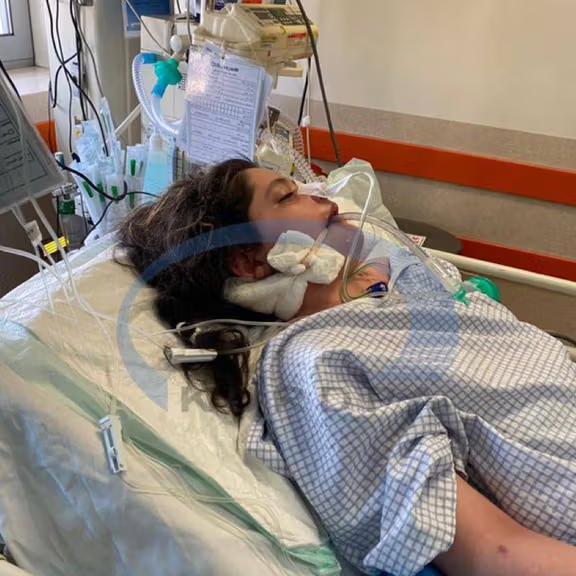
When Amini’s incident became public in mid-September, Iranian officials tried to claim that she had previous brain problems or chronic health issues that led her to lose consciousness during her arrest. As evidence emerged that her skull was broken, they stopped making such claims for a while, but after using brutal force against protesters, they are now sticking to their guns, denying wrongdoing.
That tactic also relates to cases of at least two teenage girls who were killed during protests. Officials claim that Nika Shakrami and Sarina Esmailzadeh both fell from rooftops and died. In case of Esmailzadeh, Amnesty International has verified that she was beaten on the head by heavy batons by security forces and taken to hospital by her friends but she died before any medical help was administered.
Activists have called for nationwide protests on Saturday and government attempts to falsely explain away these deaths may further inflame popular anger. But the Islamic Republic has rarely accepted responsibility or guilt in similar situations.
After three years, the government has not issued a report on protests in November 2019 when at least 1,500 demonstrators were gunned down or otherwise killed by security forces who were ordered to stop the unrest at any cost.
Amnesty International said September 30 that a similar order was issued at the onset of the current protests.
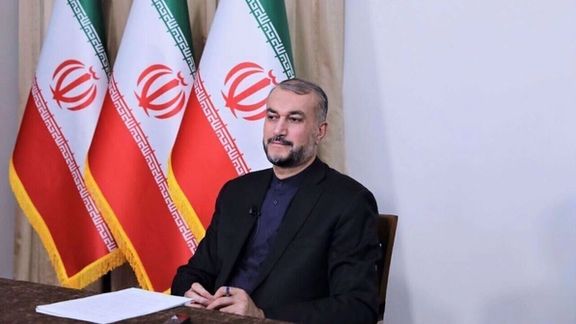
While evidence of Russia’s using Iranian drones against Ukraine is piling up, the Islamic Republic’s foreign ministry once again denied providing drones to Moscow.
Foreign Minister Hossein Amir-Abdollahian made the claims during a phone conversation with his Finnish counterpart Pekka Haavisto late on Thursday.
He said certain states dispatch arms and ammunition to Ukraine, but the Islamic Republic did not send any weapon to Russia to be used in the invasion of Ukraine, because Tehran believes that the only way to resolve the issue is through diplomatic channels, and that any sort of military aid will delay the opportunity to reach peace.
Iran’s foreign ministry spokesman Nasser Kanaani had said October 3 that media reports were “baseless” and that Tehran was committed to “active neutrality and opposition to war and the need for a political settlement of the differences between the two sides and away from violence.”
Oleksiy Kuleba, the head of the Kyiv military administration, said Thursday that six explosions 75km south of the city early Wednesday, wounding one in a military base at Bila Tserkva, had been carried out by Iranian-made Shahed 136 delta-wing ‘kamikaze’ drones.
Moreover, Ukrainian President Volodymyr Zelensky said in his address to the participants of the European Political Community summit in Prague on Thursday, “Today, Russia launched another airstrike on Ukrainian cities. It used Iranian drones again. By the way, they are used every day, and so far Iran says every day that there are allegedly no such drones here.”
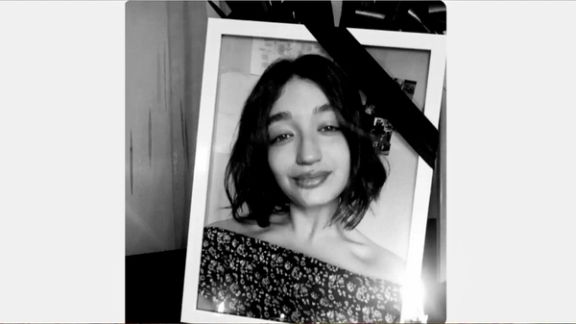
Government manipulation of information about the killing of teenage girls during protests and forcing families to make confessions, have outraged many in Iran.
Chief of the Alborz Province Justice Department, Hossein Fazeli, claimed Thursday evening that 16-year-old Sarina Esmailzadeh had jumped from a neighbor’s rooftop and killed herself and her death was unrelated to protests. “The deceased had a history of overdosing with pills to kill herself.”
Fazeli also claimed that Sarina’s mother, uncle, and young brother had gone to the prosecutor’s office to complain about the social media reports that said she had been killed in the protests.
Less than a day later, on Friday, state media released a video showing Sarina’s mother (now disputed by people who say she is not her mother but an actor) denying that her daughter was killed in the protests and saying she had a history of attempting suicide in what appeared to be an interview in which a reporter tried to lead her with his questions.
The 16-year-old YouTuber died on the way to hospital after being severely beaten in the head with batons at while protesting the killing of Mahsa Amini. She had joined a protest in Karaj, a large city half an hour from the capital Tehran, on September 21. Her injury and death were verified by Amnesty International.
Sources close to the family have said on social media that over 50 security forces were present at her funeral, presumably to prevent a protest, and did not allow anyone to take video at the cemetery. The reports say security forces removed all the photos and condolence messages on the wall of her home only a day after Sarina’s funeral. They also say the family have not been allowed to hire a lawyer and are under pressure to say she committed suicide.
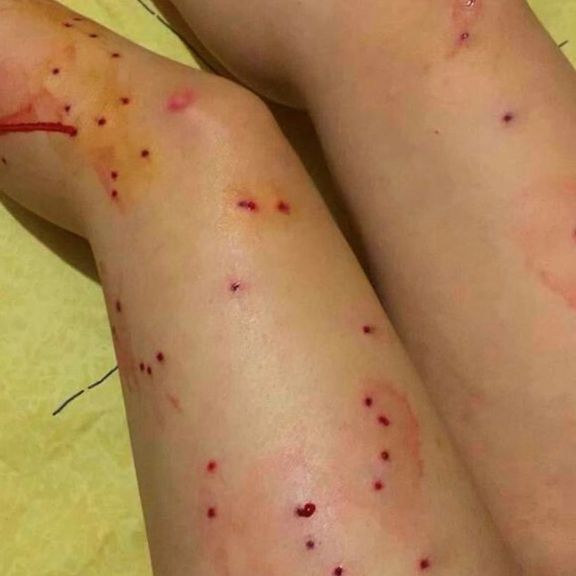
But few may believe the official account of the happy, intelligent, social-media savvy young girl’s death, or even the purported “confession” of her mother, after seeing her daughter’s posts on social media before her death.
“You tell me not to swear profanities at the authorities? … How is it that suddenly a syndrome afflicts everyone to make them jump from heights to kill themselves?” one of the unbelieving Twitterati wrote quoting the judiciary official’s claims. He was referring to similar claims made about another teenage protester, Nika Shakarami, whose whole family have been under great pressure to deny her death in the protests.
Authorities claim Nika also jumped from a rooftop after taking part in protests on the same day that Sarina did. Nika’s aunt and uncle were both arrested earlier this week and forced to corroborate the suicide script.

Nika’s mother, Nasrin Shakarami, however, has bravely resisted all pressures. She told Iran International Thursday that the authorities’ claims were “ridiculous”. “It’s not the first time that they deny the truth.” According to her, not only her brother and sister but also some of her nieces and nephews are facing arrest. “There is no use talking to the authorities. They bully us and want us to repeat their account of the incident.”
Teenage girls killed by Iran's security forces during recent protests represented some of the best among Generation Z, concerned about their society and their own future. “We all know what’s it like in Iran. What do people in any country want: welfare, welfare, welfare,” Sarina says in one of her videos but goes on to add that she and her generation have to worry about much more. “There are these restrictions for women, like compulsory hijab … We can’t even go to a stadium [to watch football],” she says after mentioning that the economy is in ruins.
Sarina, an accomplished student who spoke English and French, talked about her daily life, studies, and her aspirations in her social media posts. In one of her video blogs made during a visit to a historical mosque the youngster criticizes the government for failing to protect the country’s cultural heritage and highlights a graffiti, written by religious hardliners, that says women best stay at home and raise children.
In a video she is seen in a car singing along to Hozier’s Take Me to Church. ‘My homeland feels like being in exile,” her last post before going to the protests on her Telegram channel said.
Iran's Supreme Leader Ali Khamenei in his first reaction to the ongoing unrest Monday blamed the United States and Israel for ‘plots’ and said the youth were drawn to the streets as a result of what they saw on social media. “With some punishment such people can be made to understand they are mistaken,” he said.
“This generation who are leading everyone now were raised by millennial mothers whose rights and feelings were constantly trampled upon by their families, schools, and the society,” another Twitterati wrote, suggesting that the millennials who were better aware of their rights raised their children not to relent to the same pressures.
Nothing displays the rebelliousness of Generation Z in Iran better than a video that went viral on social media last week. In the video protesting girls who have ditched their headscarves in a secondary school in Karaj, the same city where Sarina lived, are seen kicking out an education ministry official who came to threaten them with expulsion and convince them to "behave themselves".